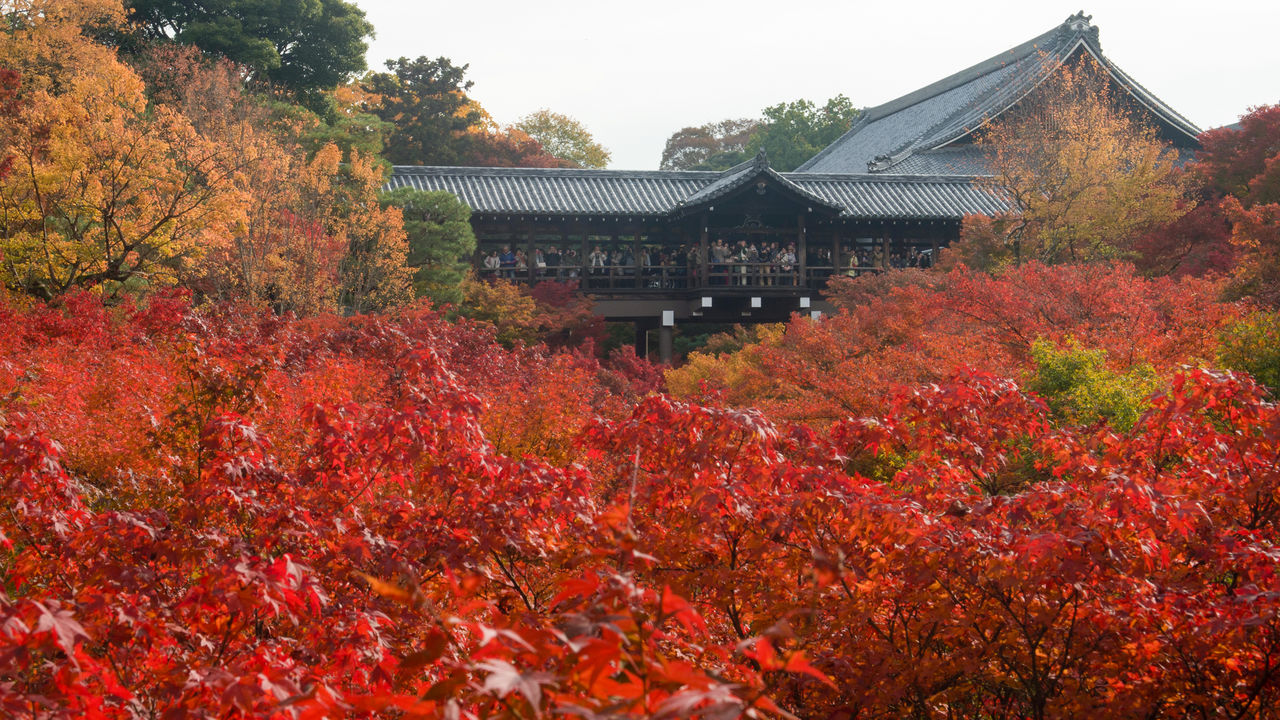
Tōfukuji Temple: Kyoto’s Most Picturesque Autumn Site
Guideto Japan
Culture- English
- 日本語
- 简体字
- 繁體字
- Français
- Español
- العربية
- Русский
Thousands of Brilliant Trees
The temple Tōfukuji, in Higashiyama-ku, Kyoto, is one of the best spots for autumn leaves in Japan’s ancient capital. The site is particularly renowned for its spectacular views of autumn leaves coloring the Sengyokukan gorge as seen from two covered bridges, the Tsūtenkyō and the Gaunkyō.
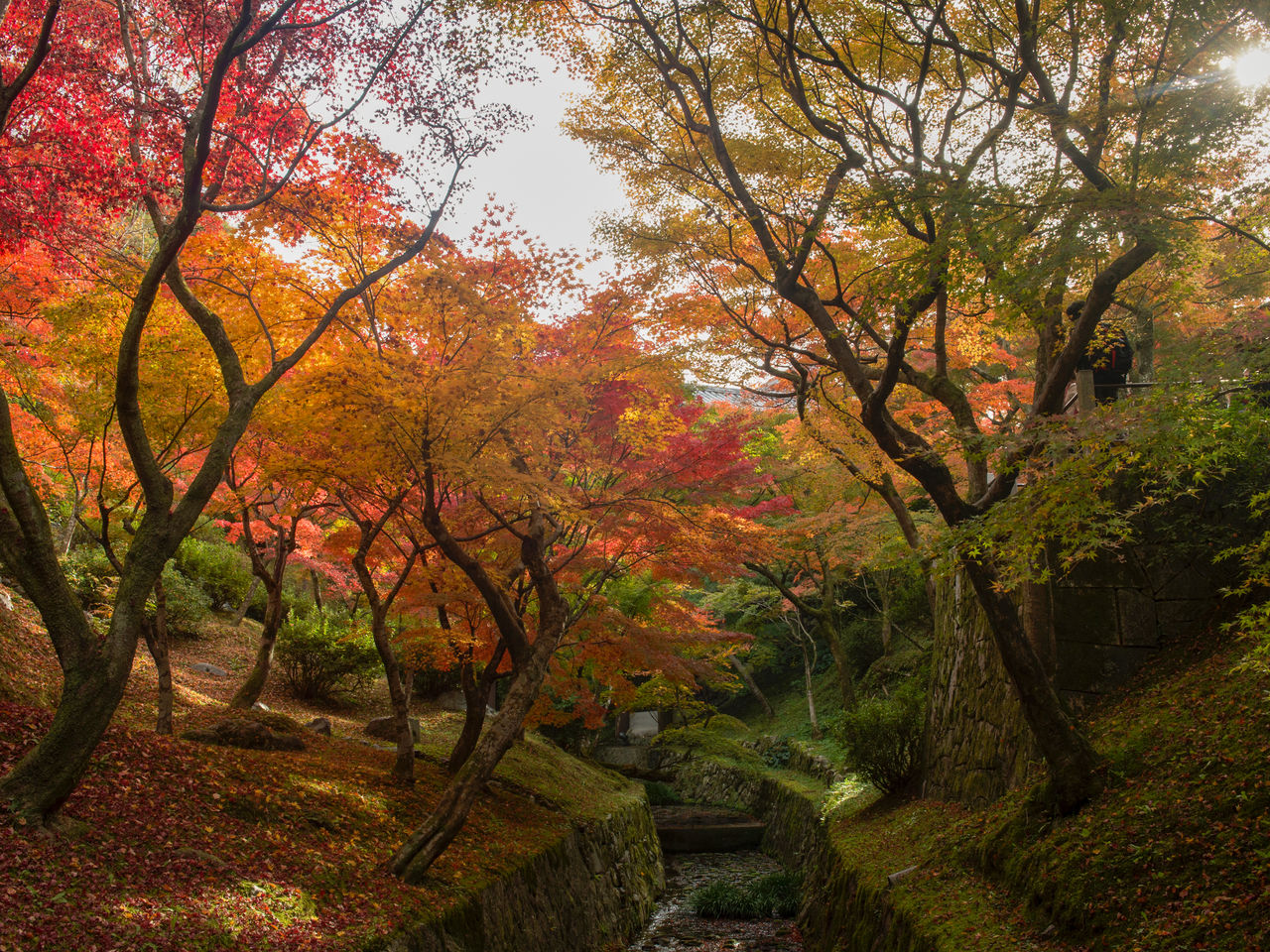 The brilliant autumn foliage at Sengyokukan gorge.
The brilliant autumn foliage at Sengyokukan gorge.
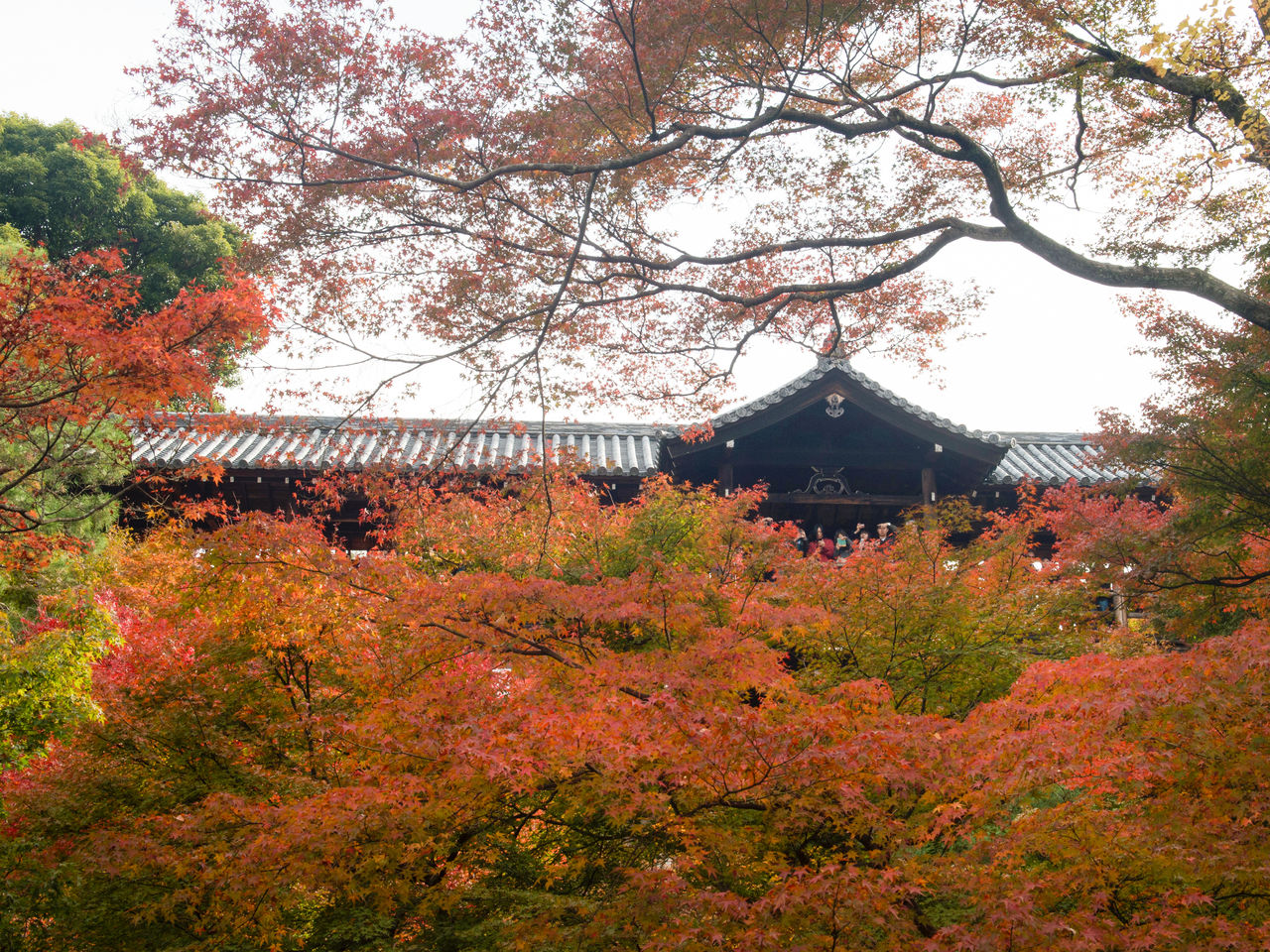 The Tsūtenkyō bridge seen from the Sengyokukan gorge in autumn.
The Tsūtenkyō bridge seen from the Sengyokukan gorge in autumn.
Tōfukuji was built in 1236 by the aristocrat Kujō Michiie (1193–1252). It is said that the name of the temple was taken from the names of Tōdaiji and Kōfukuji, in an apparent attempt to emulate these two great Nara temples. The first superior of Tōfukuji was Most Reverend Priest Enni Ben’en (1202–1280), said to be the first priest to have this supreme honorific title bestowed by an emperor. Some 2,000 trees are planted on the grounds of the temple, in particular in the Sengyokukan gorge. These include trident maples said to have been brought back from China by Enni when he returned from his clerical training there, along with other deciduous trees including various types of Japanese maples.
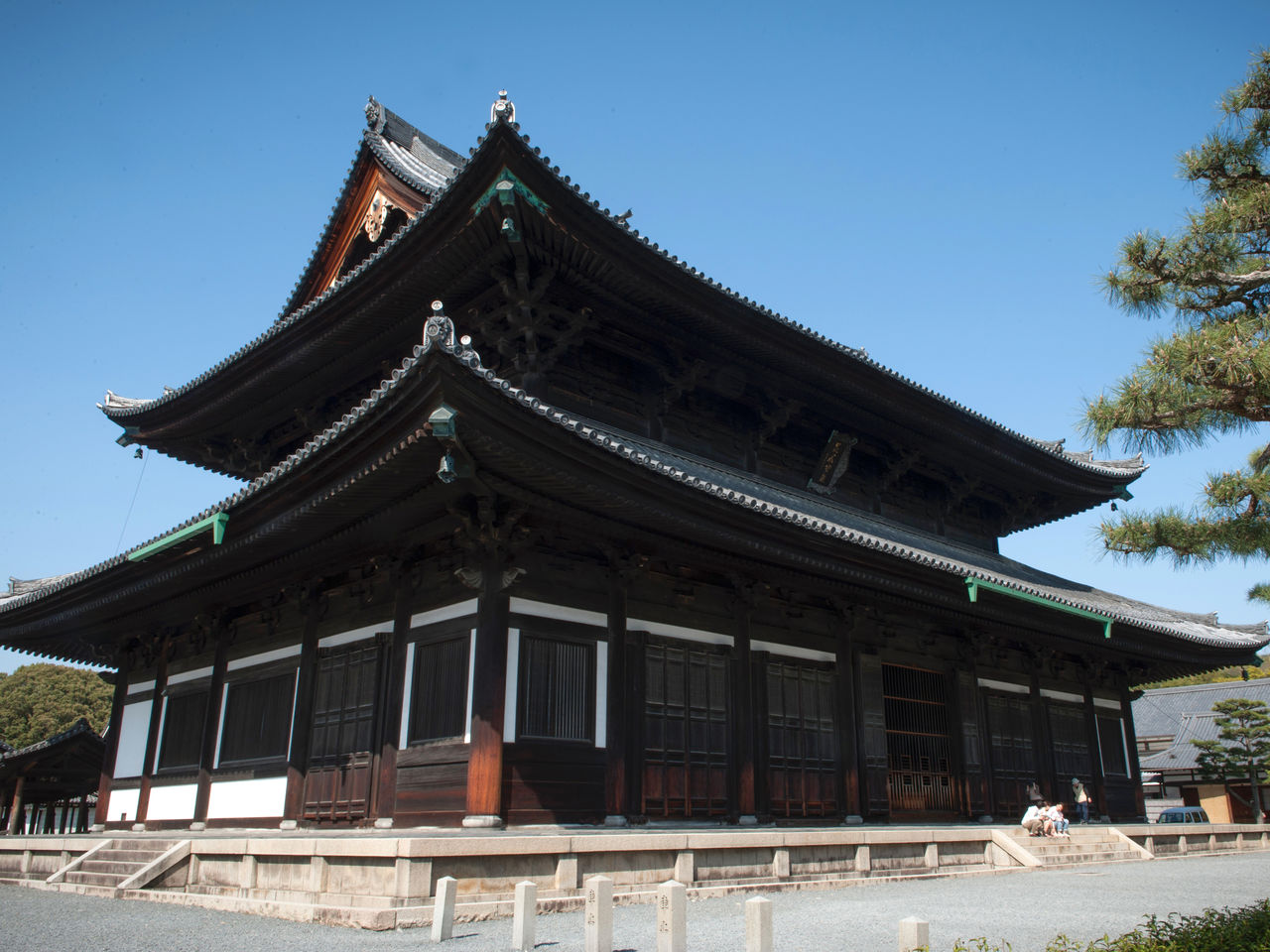 The wooden hondō (main building) of Tōfukuji, with a 41.4-meter façade, rebuilt in the twentieth century. At left is the entrance to the Tsūtenkyō bridge.
The wooden hondō (main building) of Tōfukuji, with a 41.4-meter façade, rebuilt in the twentieth century. At left is the entrance to the Tsūtenkyō bridge.
Sengyokukan runs east-to-west to the north of the hōjō (temple superior’s quarters), and is spanned by three covered bridges. From west to east, these are Gaunkyō, Tsūtenkyō, and Engetsukyō. Gaunkyō, at the temple entrance, may be crossed free of charge; the view it offers of Tsūtenkyō amid the autumn foliage epitomizes autumn at Tōfukuji.
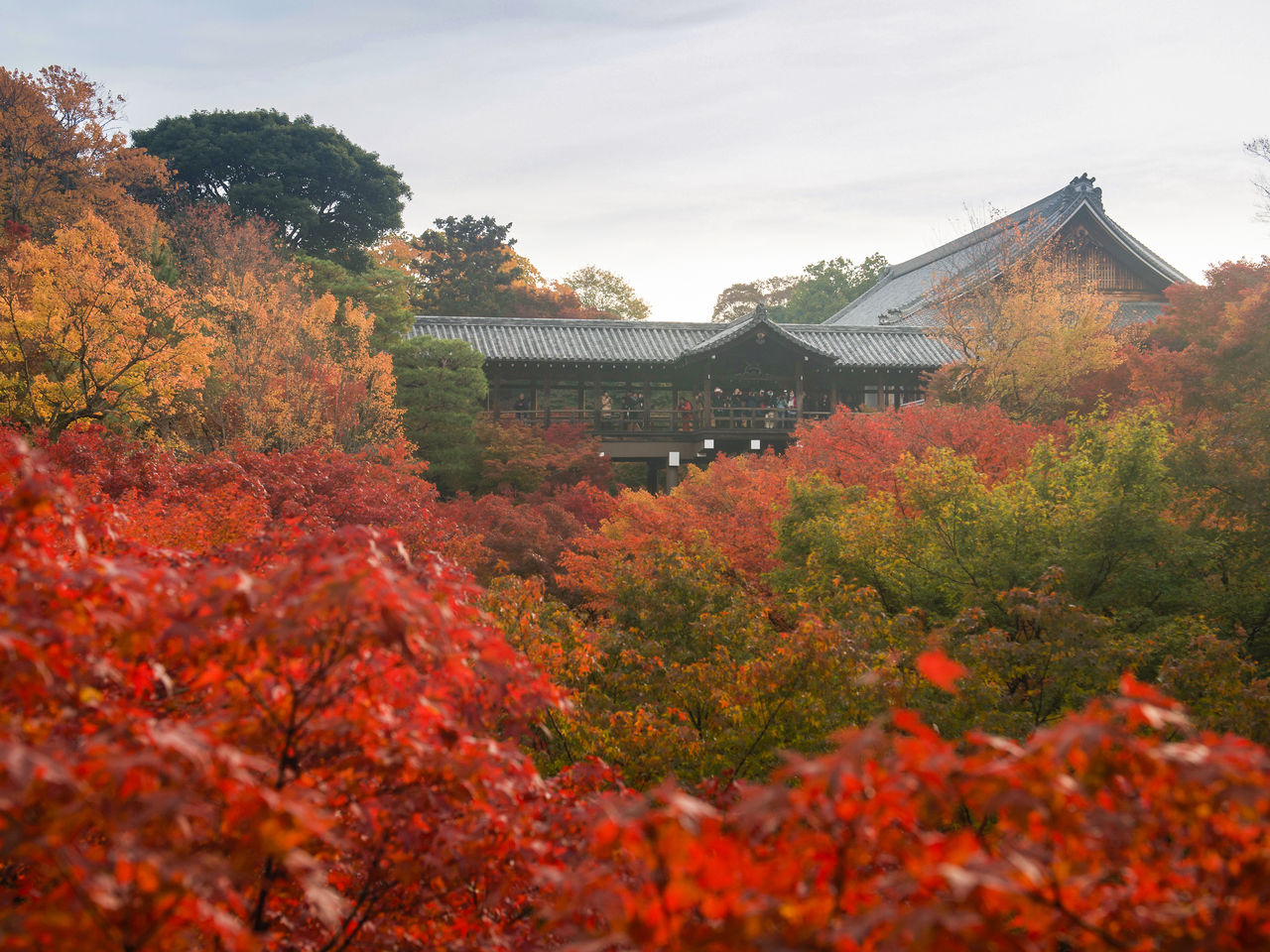 The lookout of Tsūtenkyō as seen from Gaunkyō.
The lookout of Tsūtenkyō as seen from Gaunkyō.
Tsūtenkyō is used for access from the hondō (main temple area) to Jōrakuan, the northern part of the complex. Structures located in Jōrakuan include the kaisandō (a building dedicated to Enni, containing an icon of the temple’s first head priest), the kyakuden (guest/reception hall), and the kuri-no-fumon’in (monks’ quarters). An admission fee is required to cross Tsūtenkyō. The view toward Gaunkyō from the lookout in the center of Tsūtenkyō gives one a sense of looking down on a billowing sea of autumn leaves.
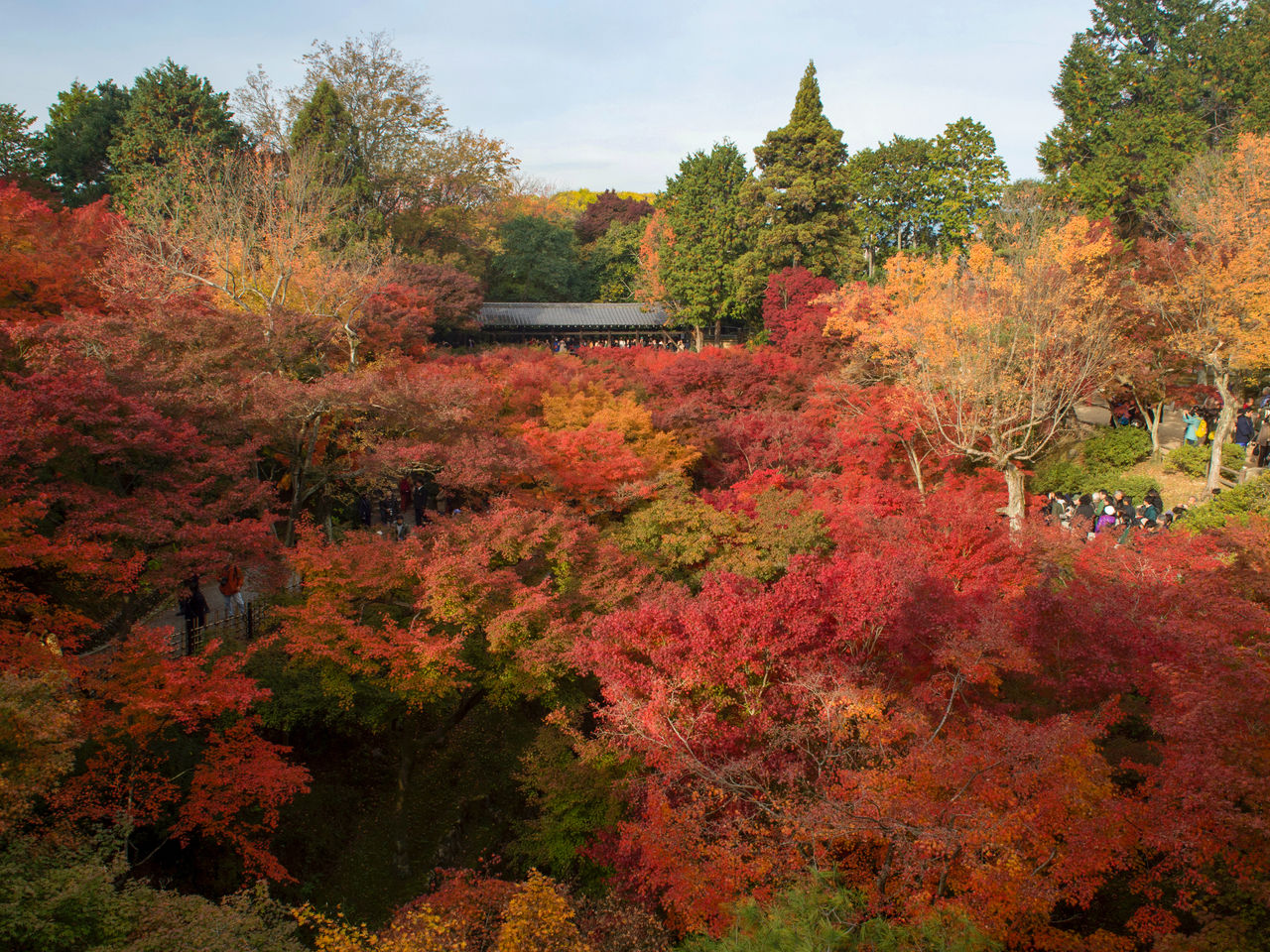 The view of Gaunkyō from Tsūtenkyō. Stopping to take photos on Tsūtenkyō is prohibited during autumn to prevent the bridge walkway from becoming too congested.
The view of Gaunkyō from Tsūtenkyō. Stopping to take photos on Tsūtenkyō is prohibited during autumn to prevent the bridge walkway from becoming too congested.
A Garden of Moss
Other lovely autumn vistas around Tōfukuji may be found in the vicinity of the kahi, a monument inscribed with a haiku, and the kyōzō sutra repository, as well as the harmonies of the autumn leaves with the moss in the gardens. The best time to see the autumn leaves here extends from November into early December some years. Described as the longest-lasting autumn foliage in Kyoto, the site has a place in the hearts of Japan’s autumn fans.
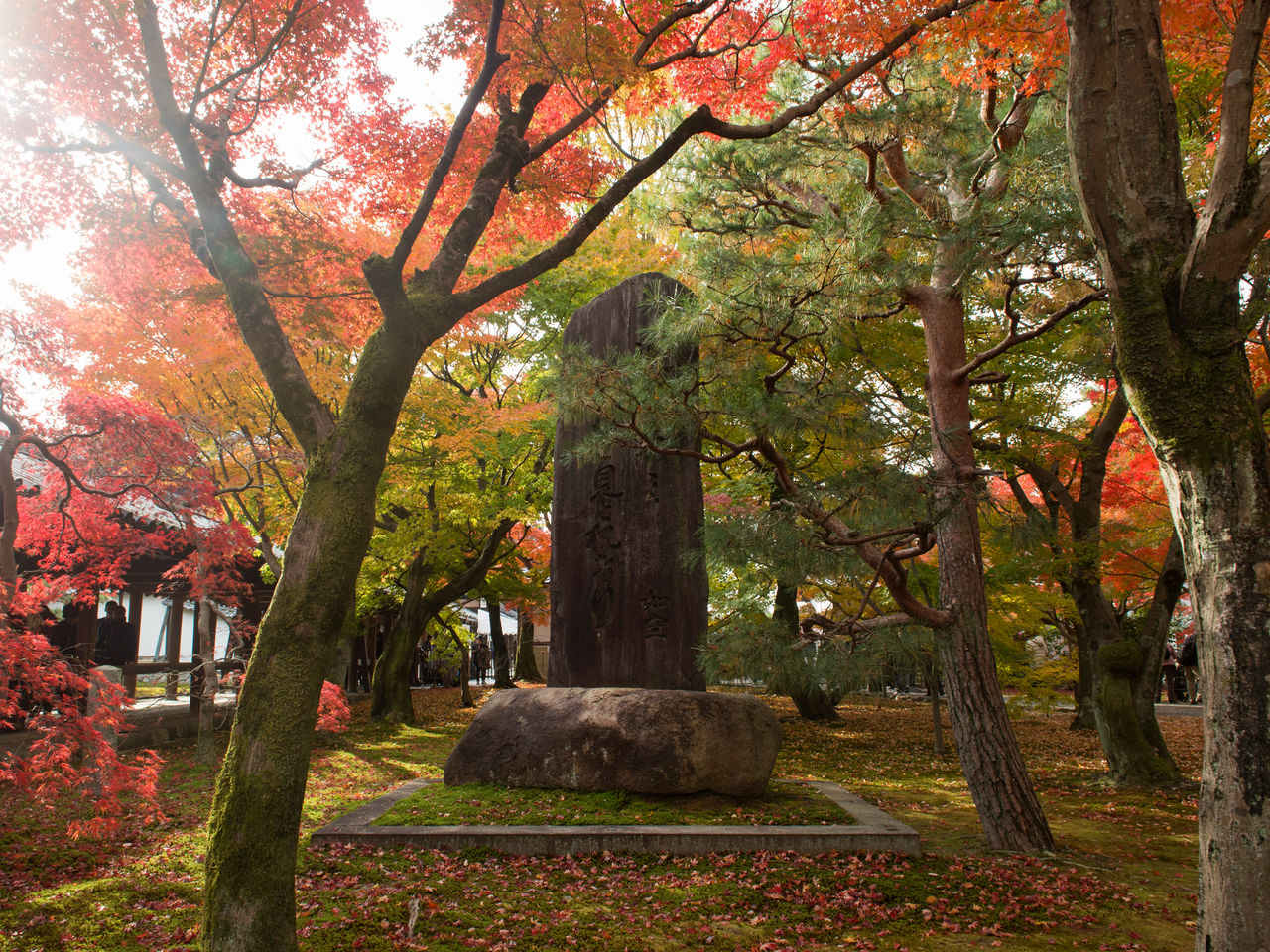 Autumn leaves surround the monument inscribed with a poem, attributed to the celebrated monk Kūkai, roughly translated as “Coming to Tsūten, I see the brilliant moon and am transfixed.”
Autumn leaves surround the monument inscribed with a poem, attributed to the celebrated monk Kūkai, roughly translated as “Coming to Tsūten, I see the brilliant moon and am transfixed.”
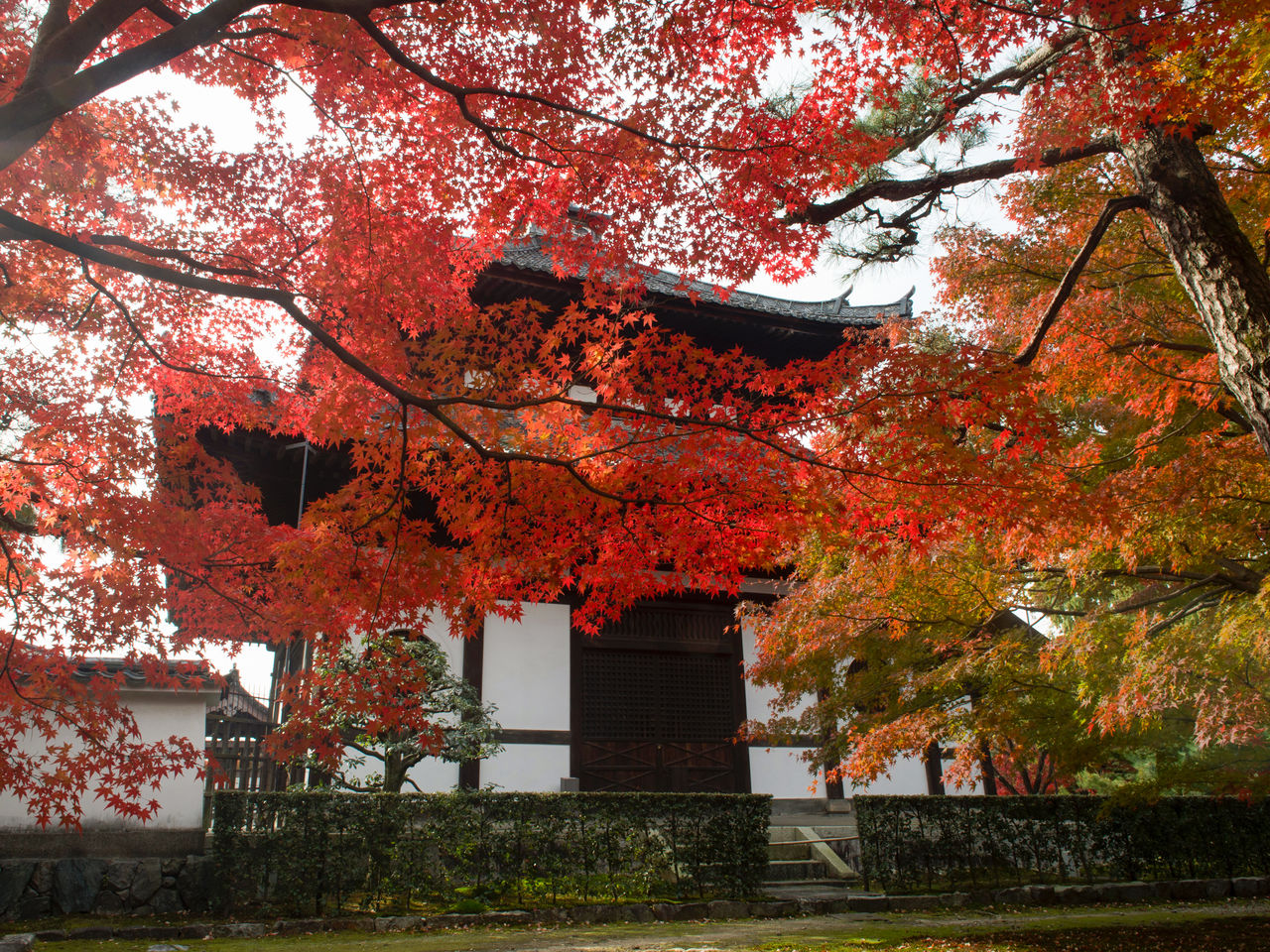 The kyōzō as seen through the autumn leaves from the direction of the Sengyokukan gorge.
The kyōzō as seen through the autumn leaves from the direction of the Sengyokukan gorge.
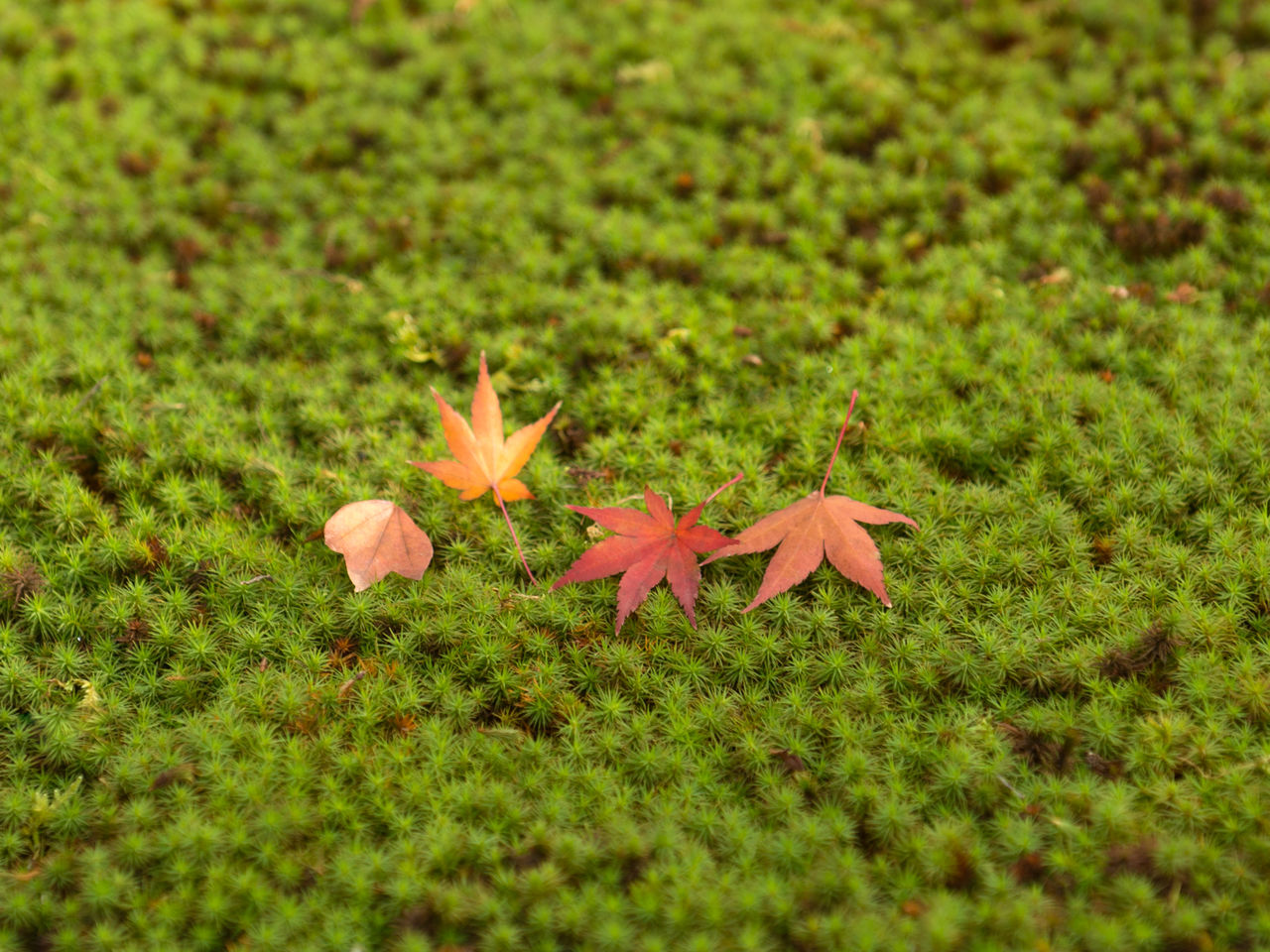 The gardens of Tōfukuji are also known as a singular place for moss. Fallen maple leaves are set off against a bed of rum sucker moss.
The gardens of Tōfukuji are also known as a singular place for moss. Fallen maple leaves are set off against a bed of rum sucker moss.
The temple grounds, covering more than 200,000 square meters, contain numerous attractions aside from the autumn leaves. These include the Sanmon gate, designated a Japanese National Treasure, the Honbō gardens, laid down by Shigemori Mirei and designated a Japanese National Site of Scenic Beauty; and the kaisandō, or Dennekaku, regarded as one of the “five towers of Kyoto.” Tōfukuji in autumn is recommended for everyone to visit at least once.
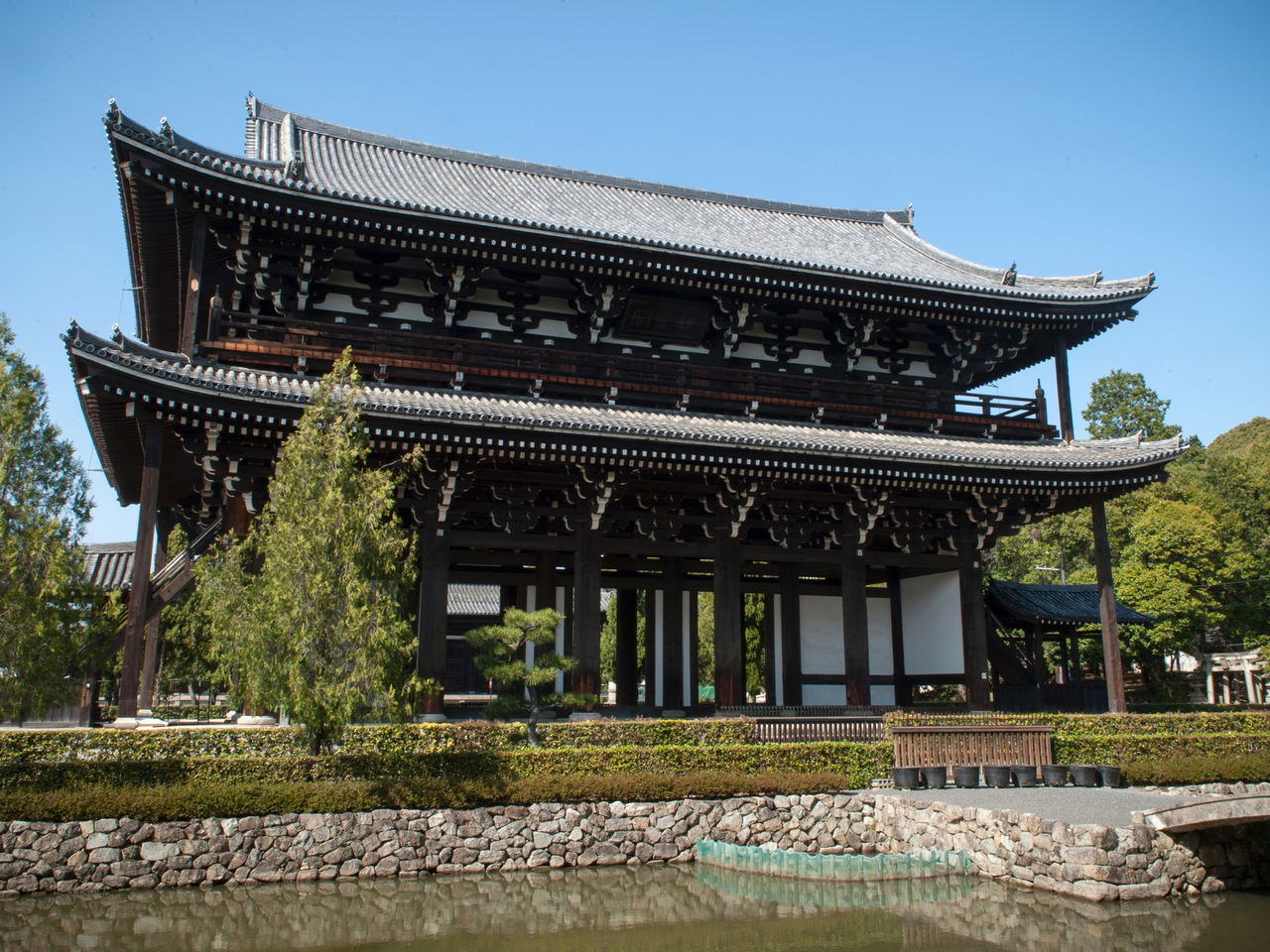 The Japanese National Treasure that is Sanmon gate, rebuilt in 1425.
The Japanese National Treasure that is Sanmon gate, rebuilt in 1425.
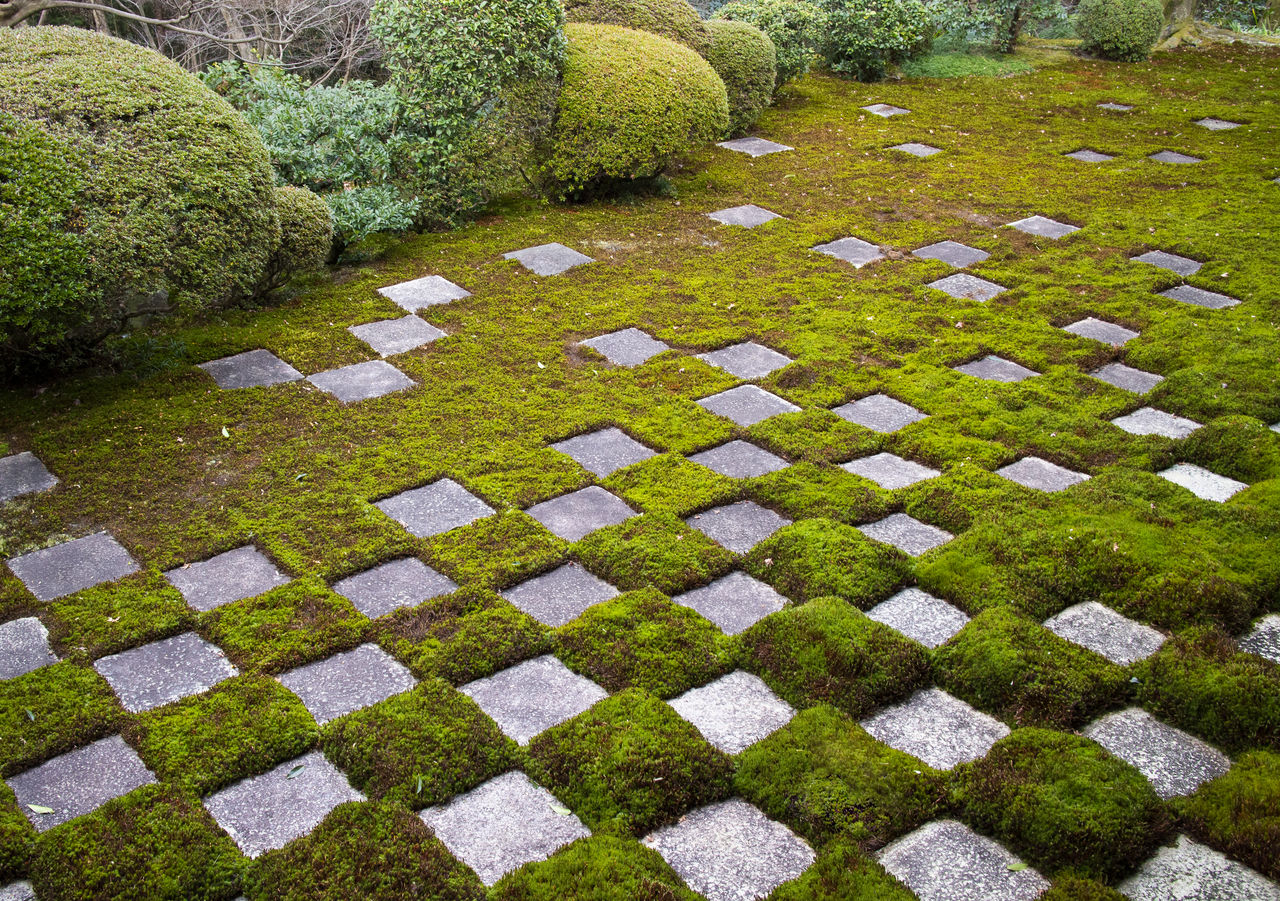 In the north gardens of the honbō, moss and flagstones form a checkerboard motif.
In the north gardens of the honbō, moss and flagstones form a checkerboard motif.
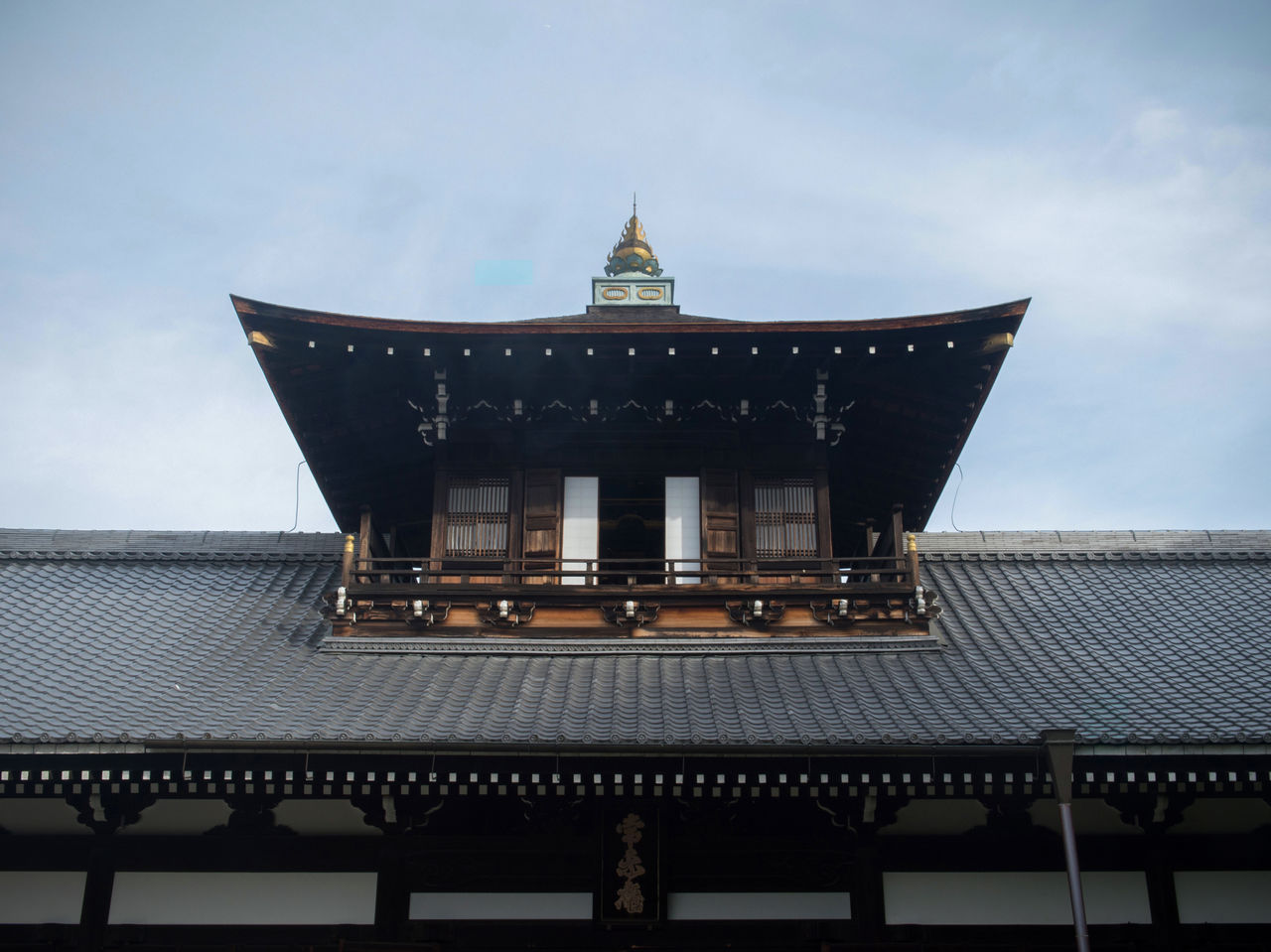 A two-story structure, unusual for a kaisandō.
A two-story structure, unusual for a kaisandō.
Tōfukuji Autumn Leaf viewing
- 8:30 am–4:30 pm daily (grounds closed to new entries at 4:00 pm).
- Admission: no charge to enter the grounds. Tsūtenkyō bridge, kaisandō, and Tōfukuji honbō gardens: ¥400 each (15 and under ¥300 each). Ryōgin’an: ¥500 (15 and under ¥300).
Access:
- From Kyoto Station: Take JR Nara Line to Tōfukuji, then 10 minutes’ walk
- From Osaka Station: Take Keihan Railway to Tobakaidō Station or Tōfukuji Station; it’s an 8–10 minute walk from either stop
- Note that Tōfukuji parking is unavailable during autumn.
(Originally published in Japanese. Reporting and photos by Kuroiwa Masakazu.)